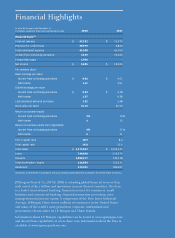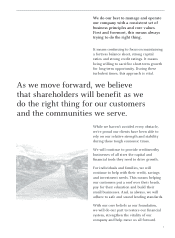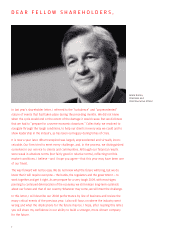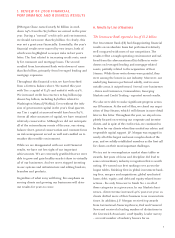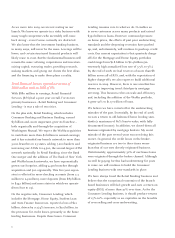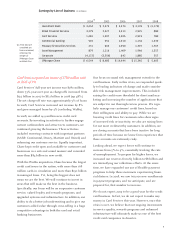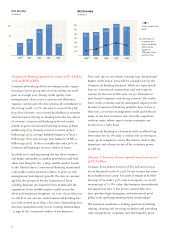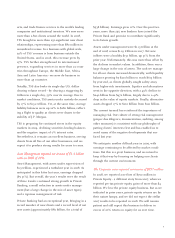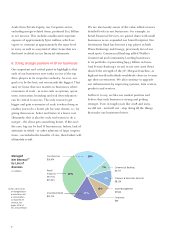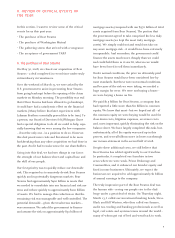JP Morgan Chase 2008 Annual Report Download - page 12
Download and view the complete annual report
Please find page 12 of the 2008 JP Morgan Chase annual report below. You can navigate through the pages in the report by either clicking on the pages listed below, or by using the keyword search tool below to find specific information within the annual report.10
Soon, hundreds returned to work that night. By the
weekend, thousands of people from around the world
were working around the clock. These professionals
ably managed the due diligence work and gave us the
confidence we needed to complete the deal. Their
Herculean effort over that weekend and the next sever-
al months made it possible for us to sign and close the
deal in about 75 days. If you could have seen what I
saw during that intensely stressful time, you would
have been very proud of the team at JPMorgan Chase.
B. The purchase of WaMu
On September 25, the Federal Deposit Insurance
Corporation (FDIC) seized the banking assets of
Washington Mutual in the largest bank failure in
history. Moments later, we acquired the deposits,
assets and certain liabilities of Washington Mutual
for approximately $1.9 billion. We now know that
JPMorgan Chase was the only bank prepared to act
immediately. We acquired WaMu’s 2,200 branches,
5,000 ATMs and 12.6 million checking accounts, as
well as savings, mortgage and credit card accounts.
Importantly, we did not acquire the assets or liabilities
of the bank’s holding company or assume the $14
billion of senior unsecured debt and subordinated
debt of Washington Mutual’s banks.
The deal was financially compelling – it was immedi-
ately accretive to earnings, and it will add an estimated
$2 billion or 50 cents per share to our 2009 results and
increasingly more thereafter. To achieve these antici-
pated earnings, we did not rely on heroic revenue
assumptions. Instead, we mostly relied on expected
cost savings (net of the large investments in the
technology and refurbishment of the branches) of $1.5
billion. We now expect to achieve cost savings of more
than $2 billion. We also plan to complete all rebrand-
ing and system conversions by the end of this year.
With the acquisition of WaMu, we purchased approxi-
mately $240 billion of mortgage and mortgage-related
assets, with $160 billion in deposits and $38 billion in
equity. We immediately wrote down most of the bad
or impaired assets (approximately $31 billion), proper-
ly reserved for the remaining assets, and established
reserves for severance and close-down costs. After
recognizing all of these costs, we believe that we now
have a relatively “clean” company that came with
approximately $4 billion in “good” common equity.
Our due diligence on WaMu’s assets was extensive,
and our assumptions were conservative. We assumed
that home prices would go down another 10% (from
the day we closed), providing a healthy margin for
error. However, if home prices go down more than
expected, say 20%, all other things being equal, this
could cost us $5 billion-$10 billion more. Even under
these circumstances, we think the transaction will
remain a great deal, at a great price for our sharehold-
ers. We are confident that it will add enormous value
to JPMorgan Chase in the future.
Given our conservative nature, we sold $11.5 billion in
common stock the morning after the deal announcement
to maintain our strong capital base. The capital raise –
upsized due to strong response from investors – was the
largest U.S. common stock follow-on offering ever exe-
cuted. In addition, WaMu’s retail deposits contributed
to our stable funding base and liquidity position.
In prior years, we consistently expressed our desire to
broaden our retail footprint to attractive regions such
as the West Coast and Florida – as long as the plan
made good sense financially and we could execute the
transaction effectively. The WaMu transaction aligned
perfectly with this criteria. Specifically, it expands our
retail franchise into fast-growing new markets with
established branches; bolsters our presence in our
significant footprint states; and, over time, will allow
us to extend the reach of our commercial banking,
business banking, credit card and wealth management
efforts. These additional businesses were not heritage
strengths of WaMu but, in effect, can be built on top
of the WaMu branches and we hope eventually will
add another $500 million to our earnings (this will
take many years and was not built into our original
assumptions). An expanded product line, together
with enhanced systems, will benefit former WaMu
customers tremendously.


